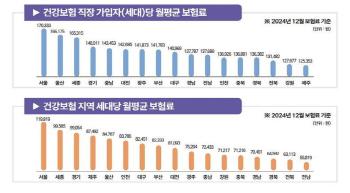More gum disease patients than cold patients topped outpatient treatment last year...What's the right way to prevent it?
Jun 05, 2025
|
According to the Health Insurance Review and Assessment Service's '2024 outpatient frequent disease statistics', the number of gum disease patients reached 19.5 million, exceeding that of cold patients (about 17.6 million). In particular, about 5.81 million patients in their 30s and 40s account for about 30% of the total, and gum disease, once considered a middle-aged disease, is rapidly spreading to young people.
According to a survey conducted by Philips' oral health care brand Sonicare and the Korea Oral Health Association as part of the 「2023 Korea's dental health and brushing habits」, 62.9% of 1,000 respondents said they had experienced gum bleeding while brushing their teeth, but 45.1% of 554 people who experienced gum disease said they left them unattended or did not take any action even if they were in pain.
Although there is still a perception that gum disease is a simple oral disease, gum disease is deeply related to various systemic diseases such as cardiovascular disease, high blood pressure, diabetes, and dementia. In fact, according to a joint report analyzing the association between gum disease and cardiovascular disease published by the European Association for Periodontology (EFP) and the World Heart Federation (WHF), periodontitis patients are more than twice as likely to develop strokes caused by deep blood clots and bleeding as healthy people.
The simplest way to prevent gum disease is 'correct brushing'. On the occasion of June 9 'Oral Health Day', we looked at ways to prevent gum disease that can be practiced in daily life.
Plague, a major cause of gum disease, is formed by combining bacteria and food debris in the oral cavity and accumulates mainly in the interdental and gum lines. Therefore, intensive management of these two areas during brushing is key. The Korean Oral Health Association recommends 'Standard Gum Brushing Method (Modified Bath Method)' as an effective method of brushing teeth to prevent gum disease. This method holds the toothbrush lightly like a pencil, puts the toothbrush cap at a 45 degree angle to the gum line, and vibrates finely 5 to 10 times in place. After that, it is a method of wiping the bristles from the gums to the teeth by moving the wrist.
In addition, delicate force control is essential for gum protection. It is necessary to effectively remove plaque, but maintain 'appropriate strength' that does not burden the gums. If it is difficult to implement such micro-vibration with a manual toothbrush, using a sonic electric toothbrush is also a good alternative. The sonic electric toothbrush gently cleans the interdental and gum lines with microscopic air bubbles generated by tens of thousands of sonic vibrations per minute, allowing effective plaque removal without excessive pressure. It can also reduce the risk of gum damage.
Using an oral cleaner together after brushing your teeth is also effective in preventing gum disease. The oral cleaner uses high-pressure micro-water streams to clean interdental and gum lines that are difficult for toothbrushes to reach, and complements the blind spots of oral care. In particular, oral care is more difficult if you are using a correction device or implant, and at this time, an oral cleaner can be used as an effective auxiliary tool. If used with the right brushing habits, it can increase the effectiveness of preventing gum disease.
Park Yong-deok, president of the Korean Oral Health Association, said, "To brush your teeth, it is effective to brush your teeth carefully for at least two minutes within one minute after eating food. If you eat three meals a day, practicing brushing your teeth three times a day in the morning, lunch, and dinner helps prevent gum disease."," he stressed.
This article was translated by Naver AI translator.














